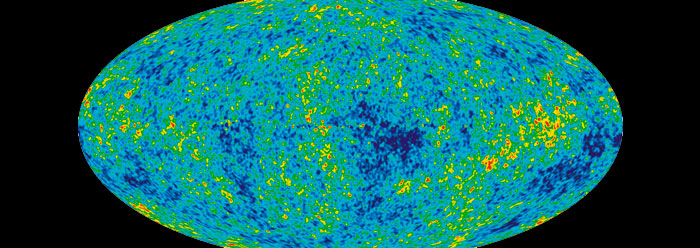NASA launched the WMAP (Wilkinson Microwave Anisotropy Probe) spacecraft in 2001. Its purpose was to make precise measurements of subtle variations in the cosmic microwave background radiation (CMB). Some cosmologists interpret the CMB to be an "afterglow" of a time from about 375,000 years after the supposed Big Bang. In December 2012, the WMAP science team announced the final release of the WMAP results.1
NASA reported that the WMAP measurements had "improved knowledge of these six numbers [that are important to Big Bang cosmology, such as the age of the universe, density of atoms, etc.] by a total factor of 68,000, [emphasis theirs] thereby converting cosmology from a field of wild speculation to a precision science."1
Of course, this is a tacit admission that cosmology up until now has been wild speculation! Why, then, have Christians been browbeaten to accept these admittedly speculative origins stories?
Although such an increase in the precision of these numbers is technically impressive, the heart of the origins debate is in the assumptions used to interpret the data, not the precision of the measurements themselves. Even high school science students are taught that measurements can be precise without necessarily being accurate. A classic example is the archer whose arrows consistently cluster closely together, albeit four feet left of the target. The archer is precise but inaccurate.
A NASA press release claimed that the determined values for these six cosmological parameters were both precise and accurate. They may indeed be precise, but they will only be accurate if the assumptions behind the interpretation of the data match reality.
The ability to improve the precision of the CMB measurements is not nearly as important as the ability to recognize the importance of assumptions in interpreting the data. Creation scientists are quite open about their presuppositions, while many evolution scientists refuse to admit that they even have starting assumptions.
The press release claimed that the WMAP measurements had confirmed specific predictions of the simplest version of "inflation," a hypothesized accelerated expansion of the universe that was invented in order to alleviate fatal problems in the original Big Bang model. The claim of support for inflation is based upon the fact that fluctuations in the CMB have properties predicted by the simplest model of inflation. At first glance, this might seem to be good news for the Big Bang model and inflation theory.
However, although the press release claims that the results "support" inflation, it does not state that inflation itself has been confirmed, and for good reason. Paul Steinhardt of Princeton University, as one of the world’s leading inflation theorists, has produced another version of the Big Bang model that makes similar (and in some cases, identical) predictions about fluctuations in the CMB, even though his model does not include inflation.2, 3
If two different Big Bang models (one with inflation and the other without) make similar predictions about fluctuations in the CMB, then the confirmation of such predictions cannot be used as an argument for inflation.
Steinhardt believes that future experimental results could distinguish between the two models, but cosmologists do not yet have such results in hand. Moreover, there is often a great deal of circular reasoning involved in the interpretation of cosmological data, so even a claim that inflation theory has been confirmed should be taken with a "large helping of salt."4
Thus, the announcement of these precise measurements is really a non-event, as far as the creation-evolution controversy is concerned. Big Bang cosmologists are still getting the wrong answers, but they are now getting those wrong answers to many more decimal places.
References
- WMAP Produces New Results. WMAP News. Posted on wmap.gsfc.nasa.gov January 21, 2012, accessed January 21, 2013.
- Lemonick, M. D. Before the Big Bang. Discover Magazine. Posted on discovermagazine.com February 5, 2004, accessed January 22, 2013.
- Steinhardt, P. J. Cosmological Perturbations: Myths and Facts. Princeton University. Posted on www.phy.princeton.edu, accessed January 24, 2013.
- Faulkner, D. 2006. Have cosmologists discovered evidence of inflation? Creation Ministries International. Posted on creation.com March 29, 2006, accessed January 24, 2013.
Image credit: NASA/WMAP Science Team
* Dr. Hebert is Research Associate at the Institute for Creation Research and received his Ph.D. in Physics from the University of Texas at Dallas.
Article posted on February 11, 2013.














